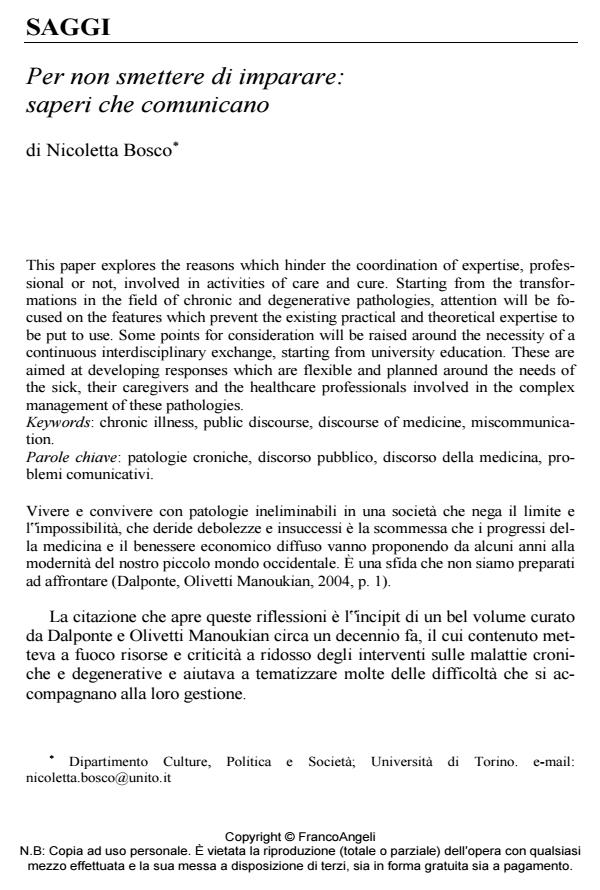Per non smettere di imparare: saperi che comunicano
Journal title SALUTE E SOCIETÀ
Author/s Nicoletta Bosco
Publishing Year 2015 Issue 2015/3
Language Italian Pages 15 P. 19-33 File size 305 KB
DOI 10.3280/SES2015-003003
DOI is like a bar code for intellectual property: to have more infomation
click here
Below, you can see the article first page
If you want to buy this article in PDF format, you can do it, following the instructions to buy download credits

FrancoAngeli is member of Publishers International Linking Association, Inc (PILA), a not-for-profit association which run the CrossRef service enabling links to and from online scholarly content.
This paper explores the reasons which hinder the coordination of expertise, professional or not, involved in activities of care and cure. Starting from the transformations in the field of chronic and degenerative pathologies, attention will be focused on the features which prevent the existing practical and theoretical expertise to be put to use. Some points for consideration will be raised around the necessity of a continuous interdisciplinary exchange, starting from university education. These are aimed at developing responses which are flexible and planned around the needs of the sick, their caregivers and the healthcare professionals involved in the complex management of these pathologies.
Keywords: Chronic illness, public discourse, discourse of medicine, miscommunication.
Nicoletta Bosco, Per non smettere di imparare: saperi che comunicano in "SALUTE E SOCIETÀ" 3/2015, pp 19-33, DOI: 10.3280/SES2015-003003